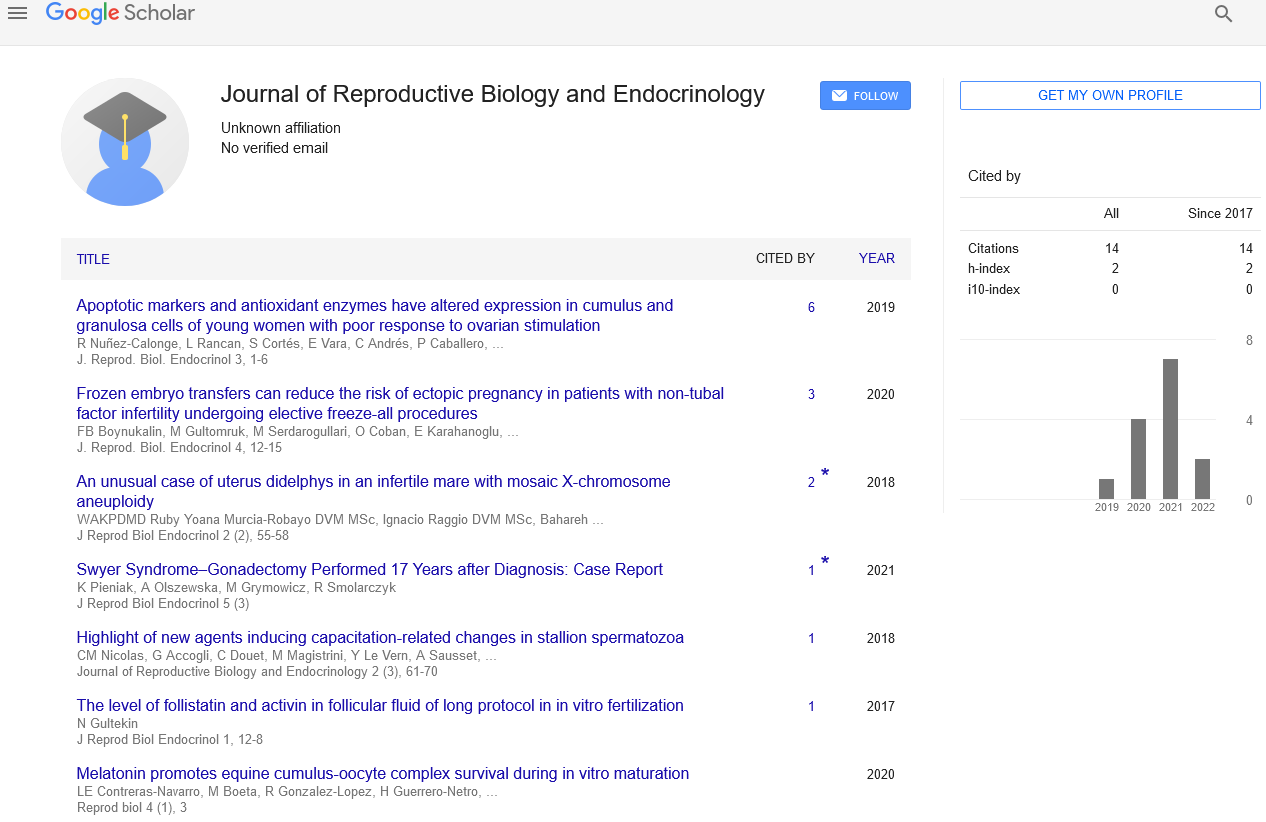Reproductive Medicine and Contraception
Received: 08-Aug-2020 Accepted Date: Aug 20, 2020; Published: 31-Aug-2020
Citation: kalli R. Reproductive Medicine and Contraception. J Reprod Biol Endocrinol. 2020;4(3):6.
This open-access article is distributed under the terms of the Creative Commons Attribution Non-Commercial License (CC BY-NC) (http://creativecommons.org/licenses/by-nc/4.0/), which permits reuse, distribution and reproduction of the article, provided that the original work is properly cited and the reuse is restricted to noncommercial purposes. For commercial reuse, contact reprints@pulsus.com
Reproductive Medicine
Regenerative medication is a part of medication concerning the male and female conceptive frameworks. It includes an assortment of conceptive conditions, their anticipation and appraisal, just as their ensuing treatment and forecast.
Regenerative medication has permitted the improvement of fake conceptive procedures (ARTs) which have permitted progresses in beating human barrenness, just as being utilized in farming and in natural life protection. A few instances of ARTs incorporate IVF, manual semen injection (AI) and incipient organism move, just as genome asset banking. Fruitlessness is the powerlessness of an individual, creature or plant to duplicate by regular methods. It is typically not the characteristic condition of a sound grown-up, aside from quite among certain eusocial species (generally haplodiploid creepy crawlies).
In people, fruitlessness is the failure to get pregnant following one year of intercourse without contraception including a male and female partner.[2] There are numerous reasons for barrenness, including some that clinical intercession can treat.[3] Estimates from 1997 recommend that worldwide around five percent of every hetero couple have an uncertain issue with fruitlessness. A lot more couples, nonetheless, experience automatic childlessness for at any rate one year: gauges extend from 12% to 28%.[4] Male fruitlessness is answerable for 20–30% of barrenness cases, while 20– 35% are because of female fruitlessness, and 25 – 40% are because of consolidated issues in both parts.[2][5] In 10–20% of cases, no reason is found.[5] The most widely recognized reason for female barrenness is ovulatory issues, which by and large show themselves by meager or missing menstrual periods.[6] Male fruitlessness is most generally because of lacks in the semen, and semen quality is utilized as a proxy proportion of male fecundity.[7]
Ladies who are fruitful experience a characteristic time of richness previously and during ovulation, and they are normally barren for the remainder of the menstrual cycle. Fruitfulness mindfulness strategies are utilized to perceive when these progressions happen by following changes in cervical bodily fluid or basal internal heat level.
Contraception
Anti-conception medication, otherwise called contraception and richness control, is a strategy or gadget used to forestall pregnancy. Birth control has been utilized since old occasions, yet successful and safe techniques for anti- conception medication just opened up in the twentieth century. Planning, making accessible, and utilizing contraception is called family planning. Some societies restrict or dishearten admittance to contraception since they believe it to be ethically, strictly, or politically undesirable.
The World Health Organization and United States Centers for Disease Control and Prevention give direction on the security of anti-conception medication techniques among ladies with explicit clinical conditions. The best strategies for contraception are sanitization by methods for vasectomy in guys and tubal ligation in females, intrauterine gadgets (IUDs), and implantable birth control. This is trailed by various hormone-based strategies including oral pills, patches, vaginal rings, and injections. Less compelling techniques incorporate physical boundaries, for example, condoms, stomachs and anti-conception medication wipes and ripeness mindfulness methods. The least viable strategies are spermicides and withdrawal by the male before ejaculation. Sterilization, while exceptionally viable, isn't generally reversible; every other strategy are reversible, most promptly after halting them. Safe sex rehearses, for example, with the utilization of male or female condoms, can likewise help forestall explicitly sent infections. Other strategies for contraception don't ensure against explicitly communicated diseases. Emergency conception prevention can forestall pregnancy whenever taken inside 72 to 120 hours after unprotected sex. Some contend not engaging in sexual relations is additionally a type of contraception, yet forbearance possibly sex training may increment adolescent pregnancies whenever offered without anti-conception





